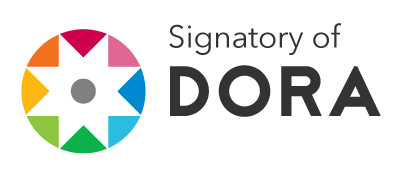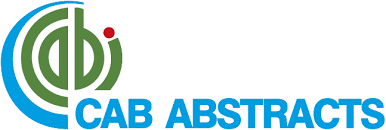Consequences of Parasitized Prey Provision on the Fitness and Development Parameters of a Solitary Wasp, Rhynchium brunneum brunneum (Vespidae: Eumeninae)
DOI:
https://doi.org/10.13102/sociobiology.v71i2.10449Keywords:
Dolichogenidea sp, fitness, parasitised preyAbstract
The solitary wasp, Rhynchium brunneum brunneum (Fabricius), constructs nests in hollow cavities of bamboo, provisions her brood cells with caterpillars, and partitions the cells using mud. The wasp larva, upon hatching, feeds on the provisioned lepidopteran larvae and completes its development inside the cell. The fitness and development of immature stages of the wasp on the prey parasitized by Dolichogenidea sp. (Braconidae: Microgastrinae) was studied. The number of cells with parasitized prey was significantly higher during September (6.60 ± 0.11 parasitized prey/cell), October (9.20 ± 2.77 parasitized prey/cell), November (9.10 ± 2.59 parasitized prey/cell), and December (9.00 ± 2.01 parasitized prey/cell). The percentage of healthy prey per cell ranged between 53.33% to 100%, and parasitized prey per cell ranged from 0 to 25% in the sampled nests. The mortality of late instar wasp larvae (50 to 80%) was higher in the cells provisioned with the parasitized prey. The number of prey larvae provisioned per cell was significantly higher in the healthy cells (9.80 ± 0.84 prey/cell) compared to the unhealthy cells (3.60 ± 0.55 prey/cell). The prey biomass in the healthy cells (0.592 g) was significantly higher than in the unhealthy cells (0.161 g). The emergence percentage of the adults was significantly higher in the healthy nests (100%) than in unhealthy nests (38.67%). The study confirms the inability of the adult wasp to discriminate between healthy and parasitized prey. The adult wasp compensated for the fitness of her immature stages by collecting a mixture of healthy prey with parasitized prey to favor the growth and development of her broods in the nest.
Downloads
References
Beukeboom, L.W. (2018). Size matters in insects –an introduction. Entomologia Experimentalis et Applicata, 166: 2-3.
Byers, J., Yu, D. & Jones, J. (1993). Parasitism of the army cutworm, Euxoa auxiliaris (Grt.) (Lepidoptera: Noctuidae), by Copidosoma bakeri (Howard) (Hymenoptera: Encyrtidae) and effect on crop damage. Canadian Entomologist, 125: 329-335.
Chatha, A.M.M. & Naz, S. (2020). Effect of parasitized prey on prey consumption, survival, growth, and development of Coccinella septempunctata L. (Coleoptera: Coccinellidae) under laboratory conditions. Egyptian Journal of Biological Pest Control, 30: 80.
Cowan, D.P. (1981). Parental investment in two solitary wasps Ancistrocerus adiabatus and Euodynerus foraminatus (Eumenidae:Hymenoptera). Behavioral Ecology and Sociobiology, 9: 95-102.
Cowan, D.P. (1991). The solitary and presocial Vespidae. In: Ross KG, Matthews RW (Eds). The social biology of wasps. London: Cornell University Press, Ithaca, 33-73.
Dang, H.T. & Nguyen, L.T.P. (2019). Nesting biology of the potter wasp Rhynchium brunneum brunneum (Fabricius, 1793) (Hymenoptera: Vespidae: Eumeninae) in North Vietnam. Journal of Asia-Pacific Entomology, 22: 427-436.
Freeman, B.E. (1981). Parental investment and its ecological consequences in the solitary wasp Sceliphronas simile (Dahlbom) (Sphecidae). Behavioral Ecology and Sociobiology, 9: 261-268.
Harris, A.C. (1994). Ancistrocerus gazella (Hymenoptera: Vespoidea: Eumenidae): A potentially useful biological control agent for leafrollers Planotortrix octo, P. excessana, Ctenopseustis obliquana, C. herana, and Epiphyas postvittana (Lepidoptera: Tortricidae) in New Zealand, New Zealand Journal of Crop and Horticultural Science, 22: 235-238.
Iwata K. (1964). Bionomics of non-social wasps in Thailand. Nature and Life in Southeast Asia. 3: 323-83.
Johnson, A.D., Rozenberg, T. & Segoli, M. (2023). Notes on the parasitoids found within the nests of Delta dimidiatipenne (Hymenoptera, Vespidae). Journal of Hymenoptera Research, 96: 925-936.
Klein, A.M., Steffan-Dewenter, I. & Tscharntke, T. (2004). Foraging trip duration and density of megachilid bees, eumenid wasps and pompilid wasps in tropical agroforestry systems. Journal of Animal Ecology, 73: 517-525.
Leduc, S., Rosenberg, T., Johnson, A.D. & Segoli, M. (2022). Nest provisioning with parasitized caterpillars by female potter wasps: costs and potential mechanisms. Animal Behaviour, 188: 99-109.
Lekha Priyanka, S., Jeyarani, S., Sathiah, N. & Mohankumar, S. (2022). Parasitic potential of Bracon brevicornis Wesmael (Hymenoptera: Braconidae) on Spodoptera frugiperda (J. E. Smith, 1797) (Lepidoptera: Noctuidae). Madras Agriculture Journal, 109: 87-91.
Matthews, R.W. & Matthews, J.R. (2009). Nesting behavior of Abispa ephippium (Fabricius) (Hymenoptera: Vespidae: Eumeninae): Extended parental care in an Australian Mason wasp. Psyche, 851694.
Segoli, M., Bouskila, A., Harari, A.R. & Keasar, T. (2009). Developmental patterns in the polyembryonic parasitoid wasp Copidosoma koehleri. Arthropod Structure and Development, 38: 84-90.
Segoli, M., Leduc, S., Meng, F., Hofmann, I., Kishinevsky, M. & Rozenberg, T. (2020). Frequency and consequences of the collection of already parasitized by a potter wasp. Scientific Reports, 10: 8655.
Southon, R.J., Fernandes, O.A., Nascimento, F.S. & Sumner, S. (2019). Social wasps are effective biocontrol agents of key lepidopteran crop pests. Proceedings of Biological Sciences, 286: 20191676.
Spofford, M.G., Kurczewski F.E. & Downes W. L. Jr. (1989). Nearctic species of Miltogrammini (Diptera: Sarcophagidae) associated with species of Aculeata (Hymenoptera: Vespoidea, Pompiloidea, Sphecoidea, Apoidea). Journal of the Kansas Entomological Society, 62: 254-267.
Spradbery, J.P. (1973). Wasps: An account of the biology and natural history of social and solitary wasps. University of Washington Press, Seattle.
Udayakumar, A., Aravindaram, K., & Shivalingaswamy, T.M. (2022). Nesting and predatory behaviour of potter wasp, Rhynchium brunneum brunneum Eumeninae: Vespidae: Hymenoptera) in an urban farm landscape. Biocontrol Science and Technology, 32: 794-810.
Downloads
Published
How to Cite
Issue
Section
License
Copyright (c) 2024 Amala Udayakumar, Venu Hunasikote Shamappa , Ankita Guptar, Timalapur M. Shivalingaswamy, Kasevan Subaharan, Satya Nand Sushil

This work is licensed under a Creative Commons Attribution 4.0 International License.
Sociobiology is a diamond open access journal which means that all content is freely available without charge to the user or his/her institution. Users are allowed to read, download, copy, distribute, print, search, or link to the full texts of the articles in this journal without asking prior permission from the publisher or the author. This is in accordance with the BOAI definition of open access.
Authors who publish with this journal agree to the following terms:
- Authors retain copyright and grant the journal right of first publication with the work simultaneously licensed under a Creative Commons Attribution License that allows others to share the work with an acknowledgement of the work's authorship and initial publication in this journal.
- Authors are able to enter into separate, additional contractual arrangements for the non-exclusive distribution of the journal's published version of the work (e.g., post it to an institutional repository or publish it in a book), with an acknowledgement of its initial publication in this journal.
- Authors are permitted and encouraged to post their work online (e.g., in institutional repositories or on their website) prior to and during the submission process, as it can lead to productive exchanges, as well as earlier and greater citation of published work (See The Effect of Open Access).



 eISSN 2447-8067
eISSN 2447-8067










